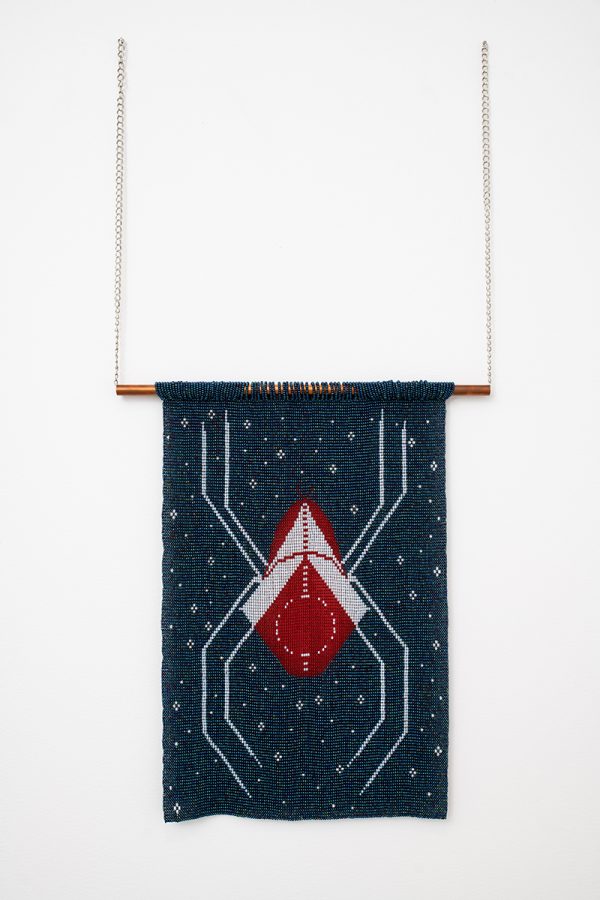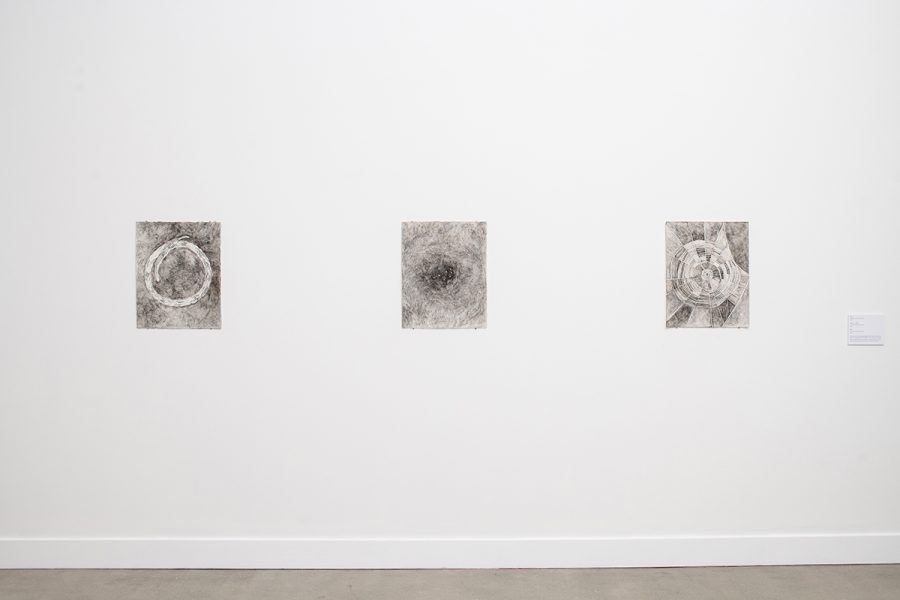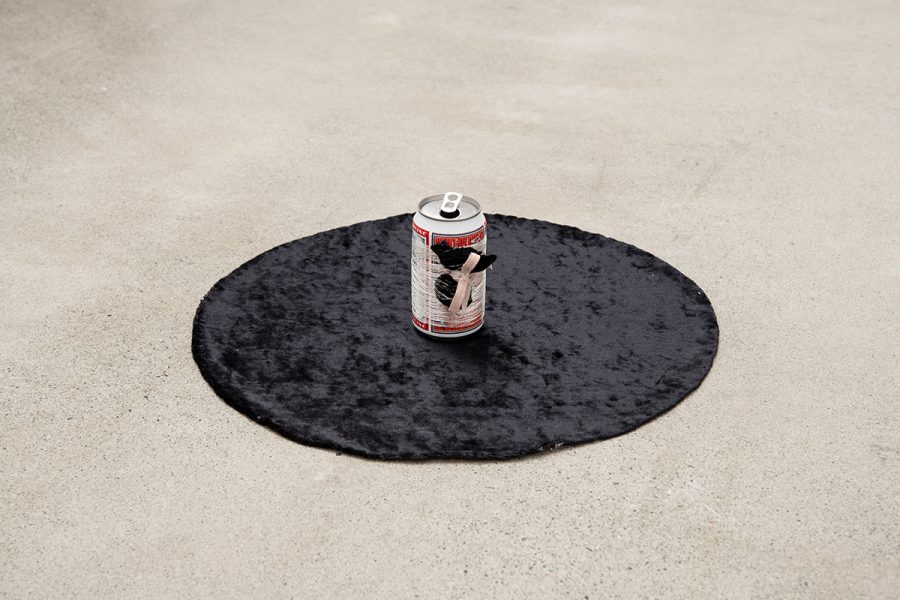
For as long as I can remember, I have had dreams about spiders. Often they would be sitting on their intricately woven webs, some larger than life, others barely visible amongst their ornate cobweb patterning. In one recurring dream, I enter the wraparound deck of my first childhood home on a bright summer afternoon, the sun harshly reflecting off the white paint, over-exposing the scene. As I turn the corner, the entire deck is covered in layers of various-sized cobwebs, blocking my way around the corner to the other door. In that moment, an overwhelming apprehensiveness seizes me and I freeze—but oddly enough, I am not afraid.
Similarly, in Pawatamihk, the solo exhibition by Michif artist Audie Murray at the Nanaimo Art Gallery, the spider and its web are one of the symbols recounted from a dream, and are rendered in ornate beadwork, the charcoal from a smudge, and more abstractly as an old Budweiser can laced tight to a tobacco sachet with silk thread. According to Jungian dream interpretation, spiders fall under the archetype of the shadow self, which represents the dark and undesirable aspects of the subconscious mind. This seems fitting considering the frightening stature of the spider’s body: spindly, hairy legs, octad eyes, menacing pincers, not to mention their sticky entrapments. My own association of spiders has evolved from this interpretation, (and hence my anxiety around seeing them depicted in my dreams) but as with all parts of nature, every organism is multifaceted—their webs are quite possibly the most exquisite examples of any organic composition. To interpret the spider foremost as a generative weaver over an ominous symbol seen for example in the work of Louise Bourgeois, is a perspective taken on in Cree cosmogony, one which Murray references in a trio of drawings titled Braid, Pakone — Kisik, and Web, all 2021.
The three drawings are mounted to the wall with handmade copper nails, the paper’s surface and edges warped slightly from the water mixed with the remnants from a smudging ritual. A textured, cloudy void provides for the foregrounded images atop which represent the Pakone-Kisik, or the Seven Sisters/Pleiades constellation, also known as “hole in the sky.” A braid of hair wound like an ouroboros, a small collection of what looks to be seven small beads or eggs, and an elegant spider’s web speak to the creation story of a hole in the sky in which a spider raises and lowers us between this and the otherworldly realms.¹ The presentation of this narrative is one of many generous gestures Murray offers the viewer throughout the exhibition, in which the concepts of dreaming and intergenerational acts of care are, like the spider’s web, expertly woven within each work.

Perhaps one the strongest aspects of the installation itself are the ways in which Murray thoughtfully uses the subtle gesture of repetition as a way to establish the bonds between embodied actions, ancestral knowledge, and the resiliency of material. In addition to the spider, beaded daisy chains make multiple appearances, one which physically blocks entry into the exhibition between two deep purple-blue walls at the gallery’s entrance. Made up of the tiniest coloured glass beads, We are always love, 2021 seems to manifest out of a large circular mirror installed on one wall, and spans across and into another identical mirror. The two mirrors create a striking infinity effect, an illusion that hints at the circular effect of time as the delicate chain continues on and on into a cosmic void.

On the other side of the mirrored wall, the can of Budweiser wrapped in silk thread sits transfixed on a circular piece of black velvet. Bending down closer to inspect the sculpture, I am struck by the mindfully even way the thread is wrapped around the can, holding the tobacco sachet tight against its body as if protecting it from succumbing to gravity and falling away. Bud, tobacco & spider, 2021 is a piece with a special story from a recent trip Murray took to visit Meadow Lake in Saskatchewan, on her ancestral homelands. In an effort to reconnect with her paternal grandmother’s resting place, the artist visited her gravesite, placed the tobacco, and poured out a can of Budweiser (a favourite drink) to honour her memory. As the dregs of the beer emptied out on the grass, a spider scurried away and out of sight. Moments like this can send a shiver up your spine, defy our perceived realities, and ask us to reconsider the connective threads between our experiences, memories, and where we came from.
1. From a conversation with the artist in December 2021. This creation story was brought to the artist’s attention by Cree knowledge keeper Wilfred Buck.

